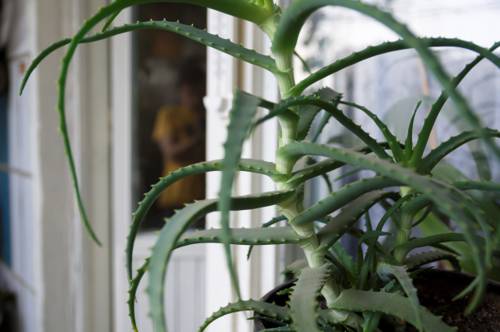
FAQ About Indoor Plant Disease Resistant Species

What are indoor plant species known for disease resistance?
Some indoor plant species known for their natural disease resistance include the Snake Plant (Sansevieria), Peace Lily (Spathiphyllum), and ZZ Plant (Zamioculcas zamiifolia). These plants are hardy and require minimal maintenance, making them ideal for most home environments.

Why are certain plants more disease-resistant than others?
Certain plants possess natural defenses against diseases due to their genetic makeup, which allows them to thrive in various environments with less susceptibility to common infections. These defenses may include thicker cell walls, production of protective chemicals, or features that deter pests and pathogens.

How can I ensure my indoor plants remain disease-resistant?
To maintain the natural disease resistance of your indoor plants, provide them with appropriate care including adequate light, proper watering, and good air circulation. Keep the plants clean by wiping leaves and removing any debris and monitor them regularly to catch any early signs of distress.

What is the most disease-resistant indoor plant?
The Snake Plant (Sansevieria) is often cited as one of the most disease-resistant indoor plants. It is highly adaptable to different lighting and watering conditions, and it is less prone to attacks from pests and diseases compared to many other species.

Are there any flowering indoor plants that are disease-resistant?
Yes, the Peace Lily (Spathiphyllum) is a flowering indoor plant that is known for its ability to resist common diseases. It is not only easy to care for but also adds aesthetic value with its beautiful white blooms.

Do disease-resistant plants still require pesticides?
Generally, disease-resistant indoor plants require minimal use of pesticides. However, it is essential to monitor the plants regularly and use natural pest control methods if necessary, such as neem oil, to avoid infestations.

Can the environment affect a plant's disease resistance?
Yes, environmental factors such as humidity, light, and temperature can affect a plant's natural disease resistance. A stable environment that mimics a plant's natural habitat can enhance its ability to fend off diseases.

What indoor conditions favor disease-resistant plants?
Indoor conditions that favor disease-resistant plants include stable temperatures, good air circulation, adequate lighting, and proper humidity levels. Avoid overwatering as it can weaken a plant's natural defenses against diseases.

Are succulents naturally disease-resistant?
Many succulents are naturally disease-resistant due to their thick leaves and minimal water requirements, which reduce the likelihood of fungal infections. However, they still need proper care to prevent issues like root rot.

How do I select disease-resistant plants for indoor spaces?
When selecting disease-resistant plants for indoor spaces, consider factors such as the plant's sunlight and water requirements, your home environment, and the plant's natural ability to withstand pests and diseases. Research different varieties and opt for those known for their resilience.

Is the ZZ Plant a good option for first-time plant owners?
The ZZ Plant (Zamioculcas zamiifolia) is an excellent option for first-time plant owners due to its robust nature and natural disease resistance. It requires minimal care and can tolerate a variety of indoor conditions.

What common diseases affect indoor plants?
Common diseases that affect indoor plants include powdery mildew, root rot, and leaf spot. Choosing disease-resistant varieties can help minimize the risk of these issues in your home.

Are there any low-light, disease-resistant indoor plants?
Yes, several low-light, disease-resistant indoor plants include the Snake Plant, ZZ Plant, and Pothos (Epipremnum aureum). These plants thrive in lower light conditions and are less prone to disease.

How often should I water disease-resistant plants?
Watering frequency for disease-resistant plants depends on the specific species and indoor conditions. Generally, allow the soil to dry out between waterings to prevent overwatering, which can diminish disease resistance.

Can I combine disease-resistant plants in a single indoor garden?
Yes, combining different disease-resistant plants in a single indoor garden can create a visually appealing and low-maintenance display. Ensure that the chosen plants have similar care requirements for optimal growth.

What are the best practices for caring for disease-resistant plants?
Best practices for caring for disease-resistant plants include providing the right amount of light, watering appropriately, maintaining good air circulation, and cleaning the plant leaves regularly. These actions help enhance the plant's natural defenses.

Can disease-resistant plants help improve indoor air quality?
Yes, many disease-resistant indoor plants, such as the Snake Plant and Peace Lily, are known for their air-purifying qualities. They can remove toxins from the air and improve the overall quality of the indoor environment.

What is root rot and how can it be prevented in indoor plants?
Root rot is a common problem caused by overwatering that leads to the decay of roots. It can be prevented by ensuring proper drainage, allowing soil to dry out between waterings, and choosing disease-resistant plants less prone to this issue.

Can indoor plant disease-resistance be enhanced naturally?
Yes, enhancing indoor plants' natural disease-resistance can be done by ensuring they have adequate nutrients from the soil, maintaining proper humidity levels, and using organic fertilizers. Consistent care and attention to environmental conditions bolster their resilience.

What misconceptions exist about disease-resistant indoor plants?
A common misconception is that disease-resistant plants require no maintenance. While they are generally hardy, all plants need some level of care, such as appropriate watering and monitoring for pests, to stay healthy and disease-free.
